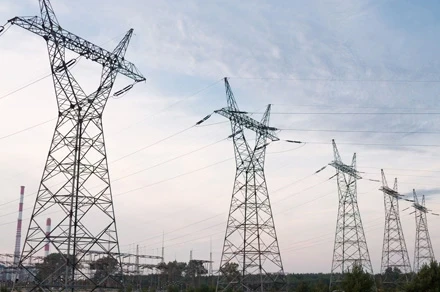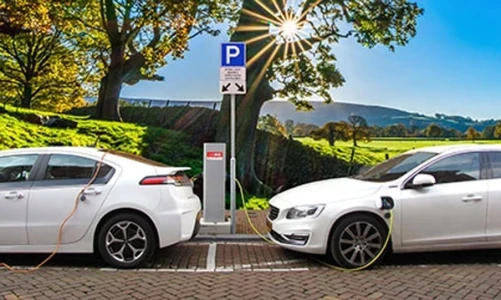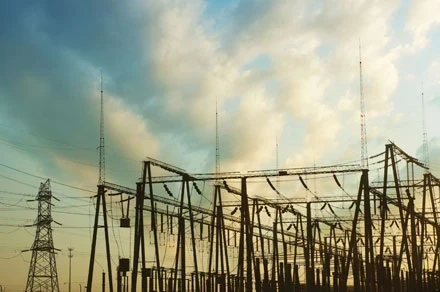Moving Forward with LED Retrofits

Evaluating options for light-emitting diodes (LEDs)
BY JEFF GOLDSTEIN, LaMar Lighting
Lighting and related maintenance costs can constitute a significant portion of the commercial building's budget. Tasked with reducing costs, facility managers, owners and operations professionals re-evaluate traditional lighting choices in search of more energy-saving alternatives.
LED lighting has become top-of-mind unprecedentedly quickly thanks to its efficiency, predicted long life, virtually no need for maintenance, and various performance characteristics either similar or superior to those of traditional lighting sources. The cost has also been decreasing, thus making LED lighting a viable option for many new construction projects--especially with generous utility rebates often available. When it comes to retrofits, high-quality fluorescent luminaires still present a cost- and energy-efficient option, and so do many of the LED solutions that use existing luminaire housing.
Electricity-Today.com will explore how LED retrofit kits compare to a recently-introduced option of factory-installed LED tubes in new fluorescent-style luminaires. While both options have a place in the market, we will key on the benefits of the latter solution for electrical contractors and building owners.
LED RETROFIT KIT SOLUTION
Many building managers consider keeping the existing fluorescent fixtures and installing LED retrofit kits in luminaires. Retrofitting often presents a less expensive alternative to switching to LED than installing all new LED fixtures because they can keep the existing fluorescent housing. Of course, the existing housings and diffusers must be in good condition. While both surface-mount and recessed types of fixtures can be modified, troffers constitute a large part of retrofit projects.
When using LED retrofit kits, there are a number of considerations to keep in mind. Existing fixtures were originally listed as fluorescent luminaires by the Underwriter Laboratories (an independent product safety testing, certification and inspection organization) and inadequate conversion of the unit may void its listing.
Retrofit products and kits selected for the job must be certified by Underwriter Laboratories (UL) for field installation in previously listed and installed luminaires. Electrical contractors should ensure that LED retrofit kits are properly labeled as such and have detailed installation instructions. Since most retrofit kits involve working with a fixture and, possibly, building wiring, all work should be performed by a qualified electrician and the power must always be disconnected before performing any electrical work.
Typical LED retrofit kits replace ballasts with an LED power supply and LED circuit boards or modular tubes, similar in appearance to standard T8 fluorescent lamps (external driver type) or use fully integrated LED tubes with built-in driver. These types of LED tubes require removal of the ballast and rewiring the alternating current (AC) mains to the "tombstones" or lamp holders.
As many older lamp holders become brittle with age, it is highly advisable to replace them with new lamp holders at the time of retrofit. Care must be taken to follow the manufacturer’s instructions and use the proper type of lamp holder. Most line driven LED tubes are powered from one end, and must use non-shunted lamp holders. Most T8 fluorescent fixtures were supplied with shunted-type lamp holders that only have wire holes on one side, and these will require replacement with the proper type of non-shunted lamp holder. If in doubt, check with the retrofit kit supplier or an electrician.
Overall, when working with LED retrofit kits, the main consideration to keep in mind is that failure to follow the manufacturer’s instructions and replace all required parts may not only void the UL listing of the fixture but also jeopardize its operation or pose a risk of shock or fire.
Recently, a new type of LED retrofit has come to market. These are internal LED tubes that are powered by standard instant start fluorescent ballasts. These tubes typically require no rewiring of the luminaire, offer significant energy savings, and offer a quick and easy way to retrofit a standard fixture.
A COMPLETE FIXTURE SOLUTION
To save the time and effort of re-wiring fixtures, building owners can instead opt for a completely new fixture with factory-installed LED drivers and boards or with LED tubes, provided the manufacturer has an approval from UL to supply such luminaires. The LED tubes can be either fully integrated with built-in drivers or equipped with separate drivers, some offering dimming capability and an option for emergency backup.
LED tubes can be installed into a broad range of fixtures, have up to 50,000 hours of lamp life and offer similar light output to standard fluorescent tubes, with up to 50 percent of energy savings. Additionally, LED tubes direct light toward the working area, without losing or reflecting light off the top of fixture housing as traditional 360-degree fluorescent lamps do.
This option provides the building with a brand-new fixture, including all new parts and the wiring compliant with the UL and code standards. Properly designed units will have rotor lock sockets with no exposed contacts, making the process of installing the lamps fast and straightforward.
One particularly significant benefit of LED tubes is that they are field-replaceable. The LED industry has experienced a tremendous growth spurt over the past few years and, while LED lighting delivers many benefits, standardization of components and replacement parts is at its infancy. Unlike fluorescent lamps and ballasts that are standardized and can be mixed and matched between brands of the same product type, every current LED brand has its own design and operating characteristics.
This is why fixtures with factory-installed LED tubes offer the easiest path to converting the building to LED lighting and are currently the easiest to maintain. When LED tubes fail, all one needs to do is twist them out and put in new ones. As technology advances, the tubes will also improve with better LED components, higher efficiency and lower wattage.
The LED tubes virtually eliminate the planned and inevitable obsolescence of most board-based LED luminaires. Looking into the future, one can easily imagine that if national hardware stores decide to carry such tubes, many lighting manufacturers will end up offering the same form factor and wiring, allowing an easy way to repair a failed LED fixture.
Building owners and occupants will also benefit from new fixtures with factory-installed LED tubes or boards. In addition to receiving new luminaires with clean paint finishes and new diffusers, energy savings and other benefits of LED lighting, the installation is often significantly faster and less disruptive when compared to retrofitting with LED kits. This option can work for both recessed and surface-mount luminaires, the latter often found in a variety of commercial and institutional spaces including warehouses, offices and conference rooms.
LAST LOOK
Both LED retrofit kits and luminaires with factory-installed LED tubes or boards present viable options and may be considered when transitioning to LED lighting. Primary considerations are the type of the retrofitted fixture, electrical safety and aesthetics. Facility managers and owners should also factor in the ease of maintenance and replacement flexibility down the road. Regardless of the selected option, the building will benefit from energy and maintenance savings over a number of years, and utility rebates are available for both DLC®-qualified LED luminaires and retrofit kits to help offset upgrade costs.
Jeffrey Goldstein, CEO at LaMar Lighting, is a lighting industry veteran with more than 30 years of experience. Among his accomplishments is the invention of occu-smart® bi-level lighting system, with several patents granted.








